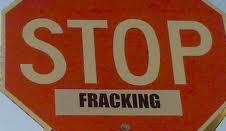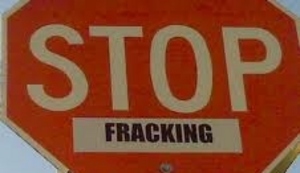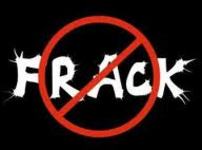Hydraulic fracturing, also known as hydrofracking or fracking, is the petroleum engineering process for extracting underground natural gas. The Wise County drilling site was in the Barnett Shale, which created a boom in natural gas extraction in the Dallas Fort Worth area, after the explosion of hydraulic fracturing and horizontal drilling techniques.
Dr Shezad Malik Law Firm has offices based in Fort Worth and Dallas and represents people who have suffered catastrophic and serious personal injuries including wrongful death, caused by the negligence or recklessness of others. We specialize in Personal Injury trial litigation and focus our energy and efforts on those we represent.
Articles Posted in Hydraulic Fracking
Fracking Water Contamination
As a Texas medical doctor and Fracking water contamination attorney, I want to pose this rhetorical question; What happens when the foxes are guarding the hen house? Consider that as you savor your morning coffee, which may be contaminated with benzene, from a contaminated water aquifer.
Oil and gas industry as well as government regulators have maintained for many decades that a drilling technique known as hydraulic fracturing, or fracking, that is used for natural gas wells has never contaminated underground drinking water. The fracking process, involves water and toxic chemicals being injected at high pressure into the ground to break up rocks and release the gas trapped there. This process according to industry officials, occurs thousands of feet below drinking-water aquifers and because of that distance, the drilling chemicals allegedly pose no risk.
According to ExxonMobil at a Congressional hearing on drilling…“There have been over a million wells hydraulically fractured …and there is not one, not one, reported case of a freshwater aquifer having ever been contaminated from hydraulic fracturing…”
But there is in fact a documented case, and the E.P.A. report suggests there may be more. Researchers, were unable to investigate many suspected cases because their details were sealed from the public when energy companies settled lawsuits with landowners. E.P.A. says this practice continues to prevent them from fully assessing the risks of certain types of gas drilling.
The American Petroleum Institute, dismissed the assertion that sealed settlements have hidden problems with gas drilling, and according to their data, they have found that drinking water contamination from fracking is highly improbable.
The documented E.P.A. case, and the report was published in 1987, and the contamination was discovered in 1984. The report concluded that hydraulic fracturing fluids or gel used by the Kaiser Exploration and Mining Company contaminated a well roughly 600 feet away on the property of James Parsons in Jackson County, W.Va., referring to it as “Mr. Parson’s water well.”
“When fracturing the Kaiser gas well on Mr. James Parson’s property, fractures were created allowing migration of fracture fluid from the gas well to Mr. Parson’s water well,” according to the agency’s summary of the case. “This fracture fluid, along with natural gas was present in Mr. Parson’s water, rendering it unusable.”
In their report, E.P.A. officials also wrote that Mr. Parsons’ case was highlighted as an “illustrative” example of the hazards created by this type of drilling, and that legal settlements and nondisclosure agreements prevented access to scientific documentation of other incidents. “This is typical practice, for instance, in Texas,” the report stated. “In some cases, the records of well-publicized damage incidents are almost entirely unavailable for review.”
Industry officials emphasize that all forms of drilling involve some degree of risk. The question, they say, is what represents an acceptable level. Once chemicals contaminate underground drinking-water sources, they are very difficult to remove, according to federal and industry studies.
A 2004 study by the E.P.A. agency concluded that hydraulic fracturing of one kind of natural gas well — coal-bed methane wells — posed “little or no threat” to underground drinking water supplies. The study was later criticized by some within the agency as being unscientific and unduly influenced by industry.
Instances of gas bubbling from fracked sites into nearby water wells have been extensively documented. The industry has also acknowledged that fracking liquids can end up in aquifers because of failures in the casing of wells, spills that occur above ground or through other factors.
Both types of contamination can render the water unusable. However, contamination from fracking fluids is widely considered more worrisome because the fluids can contain carcinogens like benzene.
The risk of abandoned wells serving as conduits for contamination is one that the E.P.A. is currently researching as part of its national study on fracking. Many states lack complete records with the number or location of these abandoned wells and they lack the resources to ensure that abandoned and active wells are inspected regularly.
A 1999 report by the Department of Energy said there were about 2.5 million abandoned oil and natural gas wells in the United States at the time.
Short answer, carbon based energy is not the answer, in this current heat wave that most of the country is withering under, think of the amount of solar energy that can be harvested?
Studies have shown that a solar array set up, in Nevada can supply all of the energy needs of the USA, for the next century.
EPA Hydraulic Fracturing and Water Contamination
As a Texas medical doctor and Dallas Hydraulic Fracking Attorney I am providing this information and commentary.
The EPA is prohibited from regulating hydraulic fracturing under the Safe Drinking Water Act. On July 28, 2011, the EPA proposed federal regulations to reduce smog-forming pollutants released by the hydraulic fracturing approach to gas drilling.
According to the EPA, If approved, the rules would amount to the first national standards for fracking of any kind. The agency sets guidelines when companies inject fluids underground, but in 2005 Congress prohibited the EPA from doing so for fracking. Regulation has been left to the states, some of which compel companies to report what chemicals they use and have imposed tougher well-design standards.
The new EPA proposal would limit emissions released during the stages of natural gas production and development, and targets the volatile organic compounds released in large quantities when wells are fracked. According to the EPA, drillers would have to use equipment that captures these gases. According to environmental experts, the proposed rules represent a step by federal regulators amid a growing controversy over fracking’s safety.
The American Petroleum Institute, the country’s main oil and gas lobbying group, has requested that the EPA delay finalizing the rules for at least six months beyond the current Feb. 2012 deadline.
The Marcellus Shale Coalition, a group representing gas drillers in the Northeast, issued a statement criticizing the proposed regulations, saying they would “undercut” gas production.
The EPA proposal is the result of a successful 2009 lawsuit brought against the agency by WildEarth Guardians and another advocacy group alleging that the agency had not updated air-quality rules as required. The EPA is supposed to review such rules at least every eight years, but in some cases had not done so for 10 years or more.
According to Jeremy Nichols, the climate and energy program director for WildEarth Guardians, hydraulic fracturing is a major source of emissions because when fluids used to frack a well return to the surface, they carry gases that can be vented into the air. In fracking’s case the soupy return contains methane, volatile organic compounds and toxic chemicals such as benzene, which generally spray into the environment. In some gas drilling areas, where emissions from drilling are particularly high, they no longer meet federal air quality standards.
The EPA proposal also calls for reducing emissions of toxic chemicals, such as cancer-causing benzene, produced by processing, transmitting and storing natural gas. Some environmentalist experts were disappointed that the proposed rules do not target methane, a potent greenhouse gas that is also the primary ingredient of natural gas. The oil and gas sector accounts for nearly 40 percent of all methane emissions nationwide, according to the EPA.
Click here. Graphics: What is Hydraulic Fracturing? Anatomy of a Gas Well
 Dallas Fort Worth Injury Lawyer Blog
Dallas Fort Worth Injury Lawyer Blog




